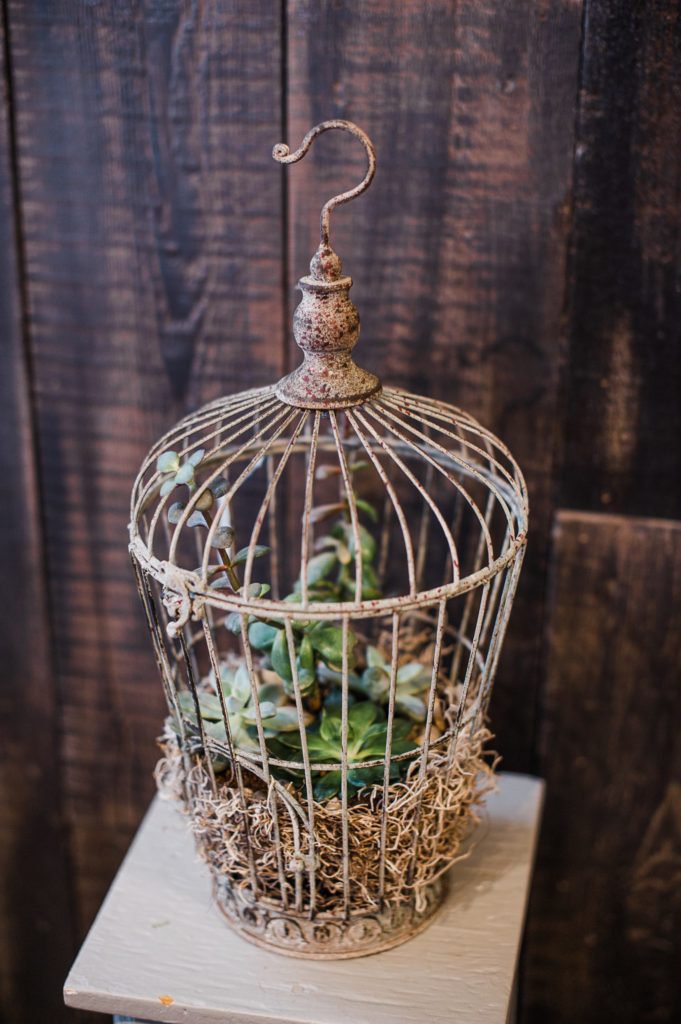
Delicious Succulents!
Succulents are definitely having a moment. From flower (Inspire has tons!) and funky housewares shops to grocery and hardware stores, they’re just everywhere! Not to mention the incredibly beautiful trend of including them in lush and vibrant bridal bouquets and unique centrepieces, not to mention a lovely and long-lasting way to spruce up an antique birdcage (ahem – check out our upcoming workshop!).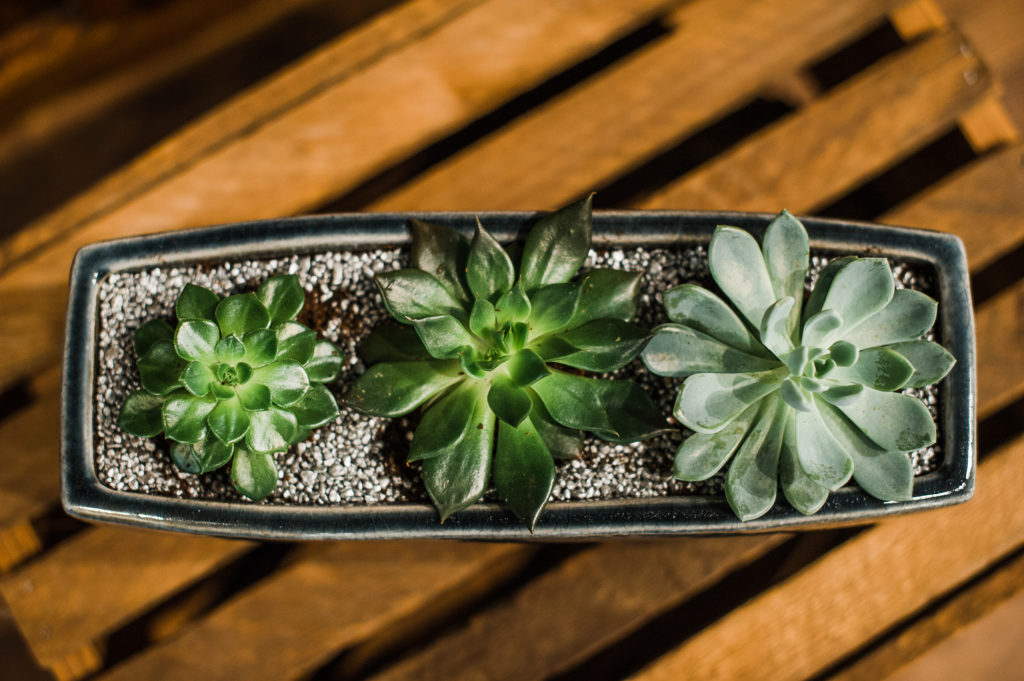 For clarification, any plant that stores water in fleshy leaves, stems, or roots is a succulent. All cacti, for example, are succulents, but not all succulents are cacti. Google searches for “succulents” grew by over 300 percent between 2013 and today. On instagram, Succulove, has amassed 173,000 followers. Make your way through the feed, almost 2000 posts, and you’ll enjoy a collection of succulents of every hue, shape, texture, and possible arrangement. There are any number of extensive lists on how to incorporate succulents into your wedding: not just the bouquet, but as simple boutonniere, floral crown, centrepiece, even topping the cake.
Why do we love them so?
Not surprisingly, the succulent movement began in California. For a long time California’s high-end landscape designers favored English-style cottage gardens, a green status symbol amidst a desert. Although succulents had been popular as easy houseplants, “the general perception of succulents among the gardening public was that they were a poor man’s plant, that they were common, they weren’t what a sophisticated gardener wanted,” said garden writer Debra Lee Baldwin.
In the early aughts the sentiment began to change. Baldwin noticed landscape designers using succulents to mirror the efficient lines and design of contemporary homes. This wasn’t the first time in history designers were so inspired: Early twentieth-century architects felt that cacti and succulents were the only plants to really complement their sensibilities—a break from the more romantic plants favored by the Victorians. “The Modernist seized on the Cactus because of its strange shape,” says a 1931 issue of House & Gardenmagazine. “In Germany, where the Modernist movement in architecture and decoration appear to thrive, the indoor winter garden of Cactus and succulents is commonplace.”
Inspired by what she saw, Baldwin published a book in 2007 called Designing with Succulents. To Baldwin and her publisher’s surprise, Designing with Succulents spent 19 weeks as the bestselling gardening book on Amazon. From there, powered by the internet, succu-mania spread across the country.
For clarification, any plant that stores water in fleshy leaves, stems, or roots is a succulent. All cacti, for example, are succulents, but not all succulents are cacti. Google searches for “succulents” grew by over 300 percent between 2013 and today. On instagram, Succulove, has amassed 173,000 followers. Make your way through the feed, almost 2000 posts, and you’ll enjoy a collection of succulents of every hue, shape, texture, and possible arrangement. There are any number of extensive lists on how to incorporate succulents into your wedding: not just the bouquet, but as simple boutonniere, floral crown, centrepiece, even topping the cake.
Why do we love them so?
Not surprisingly, the succulent movement began in California. For a long time California’s high-end landscape designers favored English-style cottage gardens, a green status symbol amidst a desert. Although succulents had been popular as easy houseplants, “the general perception of succulents among the gardening public was that they were a poor man’s plant, that they were common, they weren’t what a sophisticated gardener wanted,” said garden writer Debra Lee Baldwin.
In the early aughts the sentiment began to change. Baldwin noticed landscape designers using succulents to mirror the efficient lines and design of contemporary homes. This wasn’t the first time in history designers were so inspired: Early twentieth-century architects felt that cacti and succulents were the only plants to really complement their sensibilities—a break from the more romantic plants favored by the Victorians. “The Modernist seized on the Cactus because of its strange shape,” says a 1931 issue of House & Gardenmagazine. “In Germany, where the Modernist movement in architecture and decoration appear to thrive, the indoor winter garden of Cactus and succulents is commonplace.”
Inspired by what she saw, Baldwin published a book in 2007 called Designing with Succulents. To Baldwin and her publisher’s surprise, Designing with Succulents spent 19 weeks as the bestselling gardening book on Amazon. From there, powered by the internet, succu-mania spread across the country.
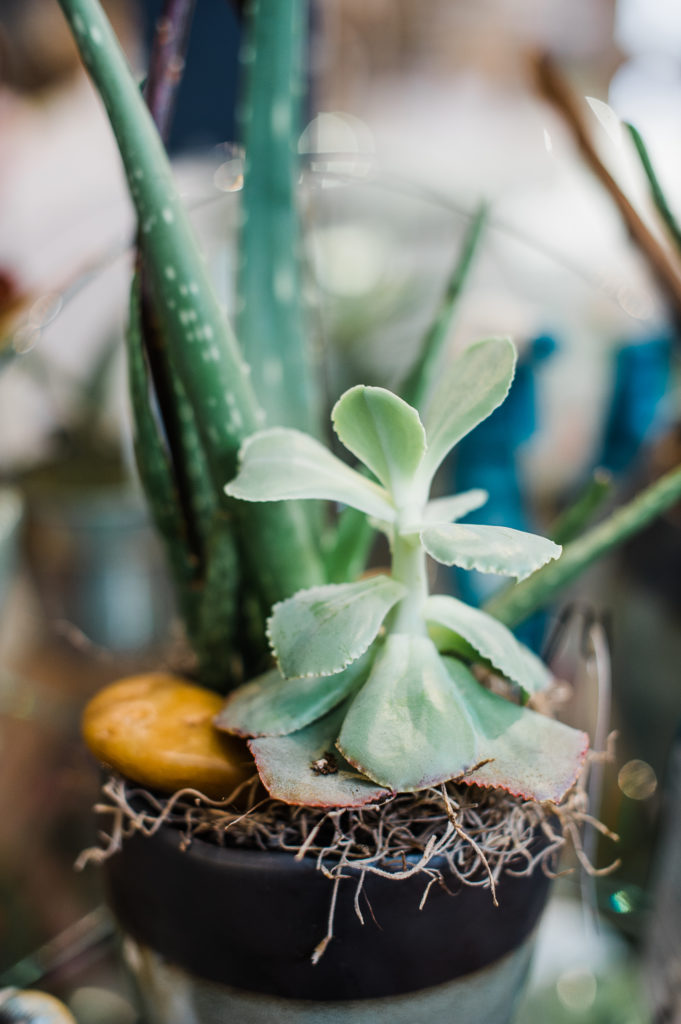 Beyond the trending there are actually biological, scientific reasons for the succulents appeal. Some grow in a spiral pattern that follows the Fibonacci sequence, which is mathematically related to the Golden Ratio. Fibonacci spirals are closely related to fractals, never-ending patterns formed by the repetition of a single shape. (“If you divide a fractal pattern into parts you get a nearly identical reduced-size copy of the whole,” explains Wired.) A Swedish study published this year concluded that viewing naturally-formed fractals provoked alpha activity in the brain—neural oscillations that indicate a “wakefully relaxed state and internalized attention.”
The darker truth and more fundamental appeal of succulents may have nothing to do with science at all. It may simply be a matter of laziness, I mean, ease! If you look at from a visual and tactile perspective, succulents are rather the closest plant to plastic. You actually have to work actively to exterminate these hardy beauties. For those of you with a black thumb, take heart, succulents will survive and flourish in spite of you!
Beyond the trending there are actually biological, scientific reasons for the succulents appeal. Some grow in a spiral pattern that follows the Fibonacci sequence, which is mathematically related to the Golden Ratio. Fibonacci spirals are closely related to fractals, never-ending patterns formed by the repetition of a single shape. (“If you divide a fractal pattern into parts you get a nearly identical reduced-size copy of the whole,” explains Wired.) A Swedish study published this year concluded that viewing naturally-formed fractals provoked alpha activity in the brain—neural oscillations that indicate a “wakefully relaxed state and internalized attention.”
The darker truth and more fundamental appeal of succulents may have nothing to do with science at all. It may simply be a matter of laziness, I mean, ease! If you look at from a visual and tactile perspective, succulents are rather the closest plant to plastic. You actually have to work actively to exterminate these hardy beauties. For those of you with a black thumb, take heart, succulents will survive and flourish in spite of you!
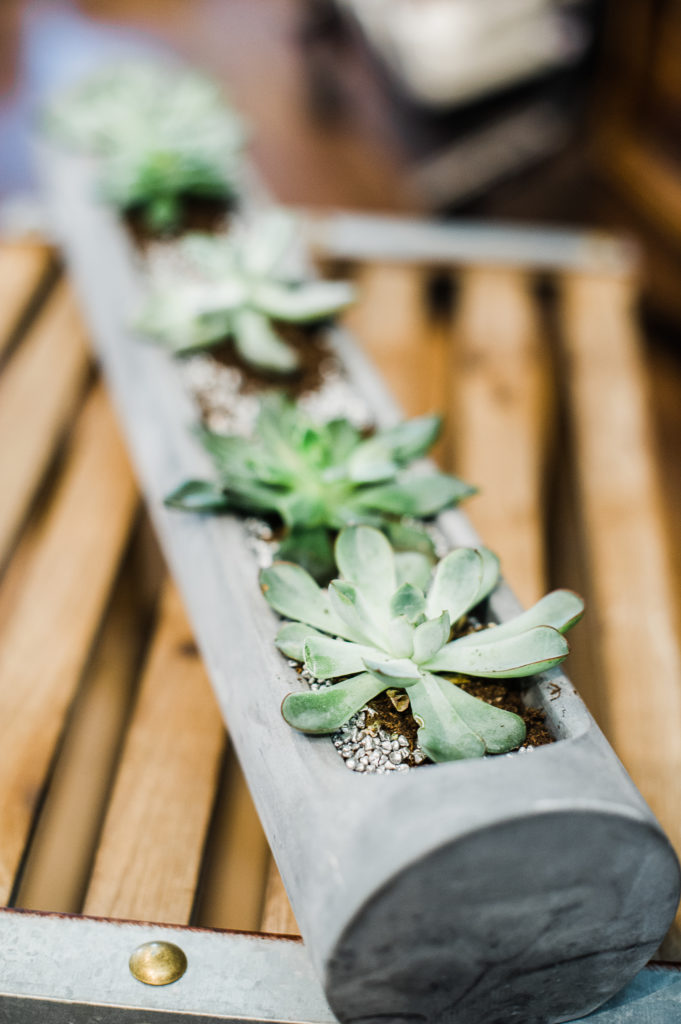
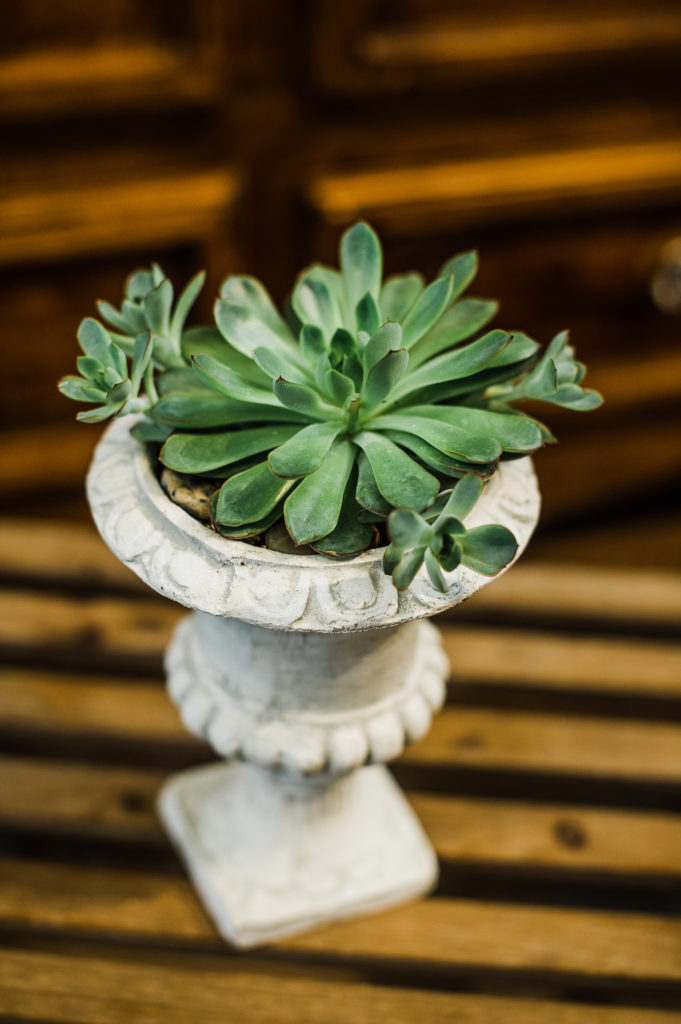
Caring for your succulents
Light – Most varieties need at least half a day to a full day of sunlight. In extremely hot areas some afternoon shade is recommended. Planting – Unless you’ve bought your succulent in a container garden arrangement (we sell plenty!), remove your plants from their pots and plant making sure the soil level remains the same depth on the plant. Once established, your succulents will benefit from a layer of pebbles or pea gravel spread on the soil around the plant. It’s also a nice decorative touch. Soil Drainage is everything. Succulents need good draining soil. When planting in the garden, make sure the area drains well and is not in a low spot that would stay wet. For container planting you can purchase cactus soil or incorporate sand, gravel or volcanic rock for better drainage. The container you are planting in should have a drainage hole or put crushed rock on the bottom before your planting medium. Watering After planting, water in well and allow the soil to dry slightly between waterings. Succulents don’t like to have wet feet. When you do water, water thoroughly. Fertilizer Fertilizing isn’t really necessary. Most succulents need very little fertilize, but a dose of well balanced fertilizer once a month with their watering should do it. Flowering Sedum all have different bloom times and colors ranging from pink, red and yellow. Sempervivums will bloom after the second or third year. A flower stalk will shoot up from the center of the main rosette with a cluster of flowers. After the flower dies, gently twist off the stalk. The main rosette has put on new offsets that will fill in.Looking at succulents for yourself or as a gift? Come on in and check out our beautiful selection! We can also help with guiding you in their care and maintenance so they last and last. A terrific Mother’s Day gift: beautiful, long-lasting and, better yet, low maintenance!
 SaveSave
SaveSave 